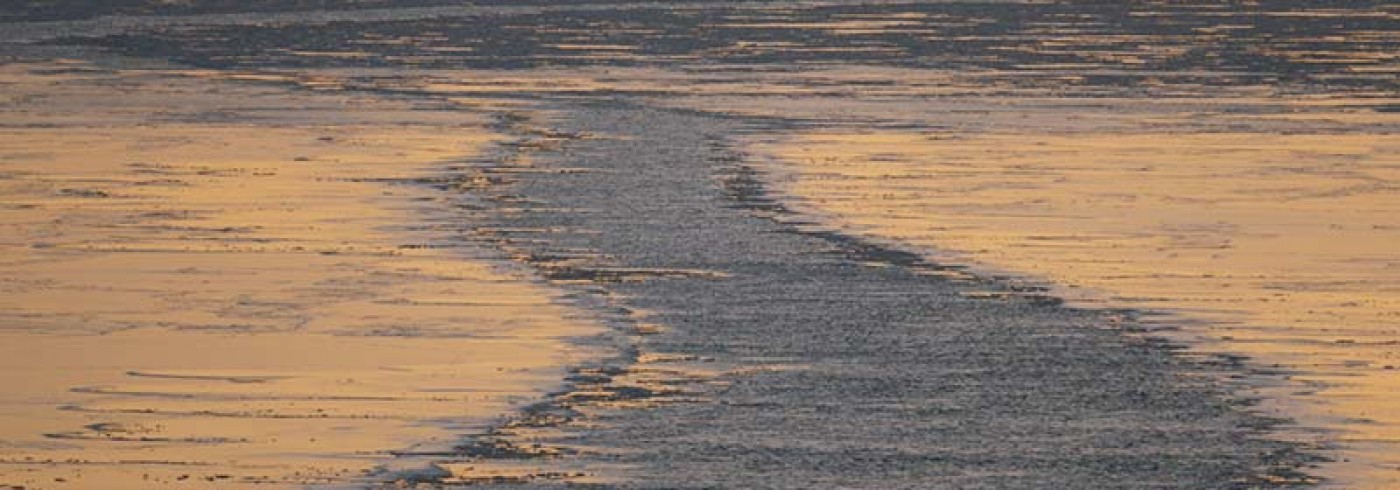Radioactivity on the Canadian tundra
Ever since the first nuclear facility was taken in to use in Chicago, USA in 1942, the environment has been contaminated by anthropogenic radionuclides. The Arctic environment was first exposed to these nuclides through the atmosphere and the sources were mainly nuclides from atmospheric nuclear weapons’ test programmes. 423 atmospheric tests have been performed and the last took place in 1980.
The Arctic environment is a vulnerable system. The pathways through the food chains are short and the transfer factors are high for fall-out radionuclides. This is the reason why inhabitants in these areas receive relatively higher doses compared to inhabitants in temperate zones. Study of the processes and the radioactive elements in this area is therefore vital.
Anthropogenic radionuclides can be used as tracers for sedimentation, oceanographic and geochemical processes. They are often easy to measure, have a unique signature and a well-defined source and are fingerprints for processes in time and s pace. This can provide us with information about important parameters such as how nuclear waste should be stored and handled to minimize risk.
The aim of this study was to investigate how plutonium (Pu), americium (Am) and caesium (Cs) isotopes behave in different types of High Arctic lakes. We focused on the sedimentation processes and dating techniques for sediment.
Filed-work
During the Tundra Northwest 1999 expedition water, sediment and soil samples were collected. All the radionuclide analyses will be carried out at the Risø National Laboratory, Denmark, and at the Department of Radiation Physics in Lund, Sweden.
Water sampling
350 litres of lake water were filtered through a 1 micrometre filter in to a plastic barrel. The water was then pre-concentrated to obtain smaller volumes (5 litre). Plutonium and americium were precipitated as hydroxide complexes after a yield determinant was equilibrated with the sample. To ascertain the 137Cs concentration in the sample, the water sample with the equilibrated yield determinant was pumped through a copper ferrocyanide impregnated filter where the caesium is sorbed. As yield determinants we used 242Pu, 243Am and 134Cs. The samples were then stored for future radionuclide analyses in the laboratory.
Sediment sampling
The sediment samples were taken from a small rubber (Zodiac) boat. The sediment sampler (HTH-corer) was of a kayak type made in Luleå, Sweden. The sampling area was 32.17 cm². Every core was sliced in one-centimetre slices and stored in plastic boxes for future radionuclide analyses in the laboratory.
Soil sampling
At every sampling location a soil sample of defined area was taken. The sample was a square with sides measuring 19.5 cm and with a thickness of about 5 cm. The samples were then stored for future radionuclide analyses in the laboratory. This will provide information about the area deposition of radioactive elements.
Laboratory preparation
At the laboratory all the radionuclide analyses are going to be carried out after arrival. The nuclides of interest are both alpha and gamma emitters. For alpha emitting nuclides radiochemical separation is necessary, while for the gamma nuclides direct measurements can be performed in a well calibrated geometry. The gamma emitting nuclides are 137Cs and 210Pb. The alpha emitting nuclides are 238,239,240Pu and 241Am, which will be separate d using methods described by Holm (1984).
Results
At present no data are available since the samples are being transported from the ship to the laboratory. The sampling was extremely successful and we are looking forward to starting on the analysing processes.
Dates
June–September 1999
Participants
Principal investigator
Mats Eriksson
Nuclear Safety Research and Facilities Department, Risø National Laboratory
Roskilde, Denmark
Principal investigator
Elis Holm
Department of Radiation Physics, Lund University
Sweden
References
Arctic Environmental Atlas, Kathleen Crane and Jennifer Lee Galasso, Office of Naval Research, Naval Research Laboratory, Hunter College, 1999.
Holm, E. (1984). Review of alpha-particle spectrometric measurements of actinides. Int. J. Appl. Rad. Isot., 35, 285-290.

